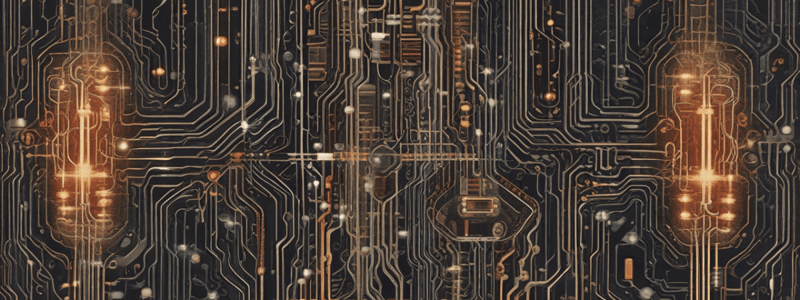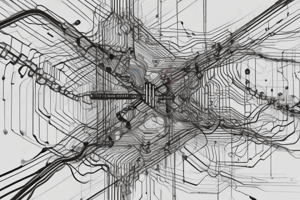Podcast
Questions and Answers
What is the primary factor that determines the amount of heat produced in a conductor?
What is the primary factor that determines the amount of heat produced in a conductor?
- The resistance of the conductor
- The power consumed by the conductor
- The voltage across the conductor
- The current flowing through the conductor (correct)
In a series circuit, what property remains constant at every point along the wire?
In a series circuit, what property remains constant at every point along the wire?
- Power
- Heat
- Resistance
- Current (correct)
What type of electrical device converts electrical potential energy to another form, such as heat?
What type of electrical device converts electrical potential energy to another form, such as heat?
- Resistor (correct)
- Capacitor
- Transformer
- Conductor
What happens to the size of the current at the junction entering and exiting the parallel parts of a circuit?
What happens to the size of the current at the junction entering and exiting the parallel parts of a circuit?
What is the SI unit for measuring resistance?
What is the SI unit for measuring resistance?
Which of the following statements is true regarding higher voltage power lines?
Which of the following statements is true regarding higher voltage power lines?
What is the formula for calculating the total resistance of resistors in series?
What is the formula for calculating the total resistance of resistors in series?
What is the formula for calculating the total resistance of resistors in parallel?
What is the formula for calculating the total resistance of resistors in parallel?
What is the unit of measurement for resistivity?
What is the unit of measurement for resistivity?
What is the formula for calculating the potential difference of a full circuit?
What is the formula for calculating the potential difference of a full circuit?
What is the formula for calculating the current entering and leaving a point in a parallel circuit?
What is the formula for calculating the current entering and leaving a point in a parallel circuit?




